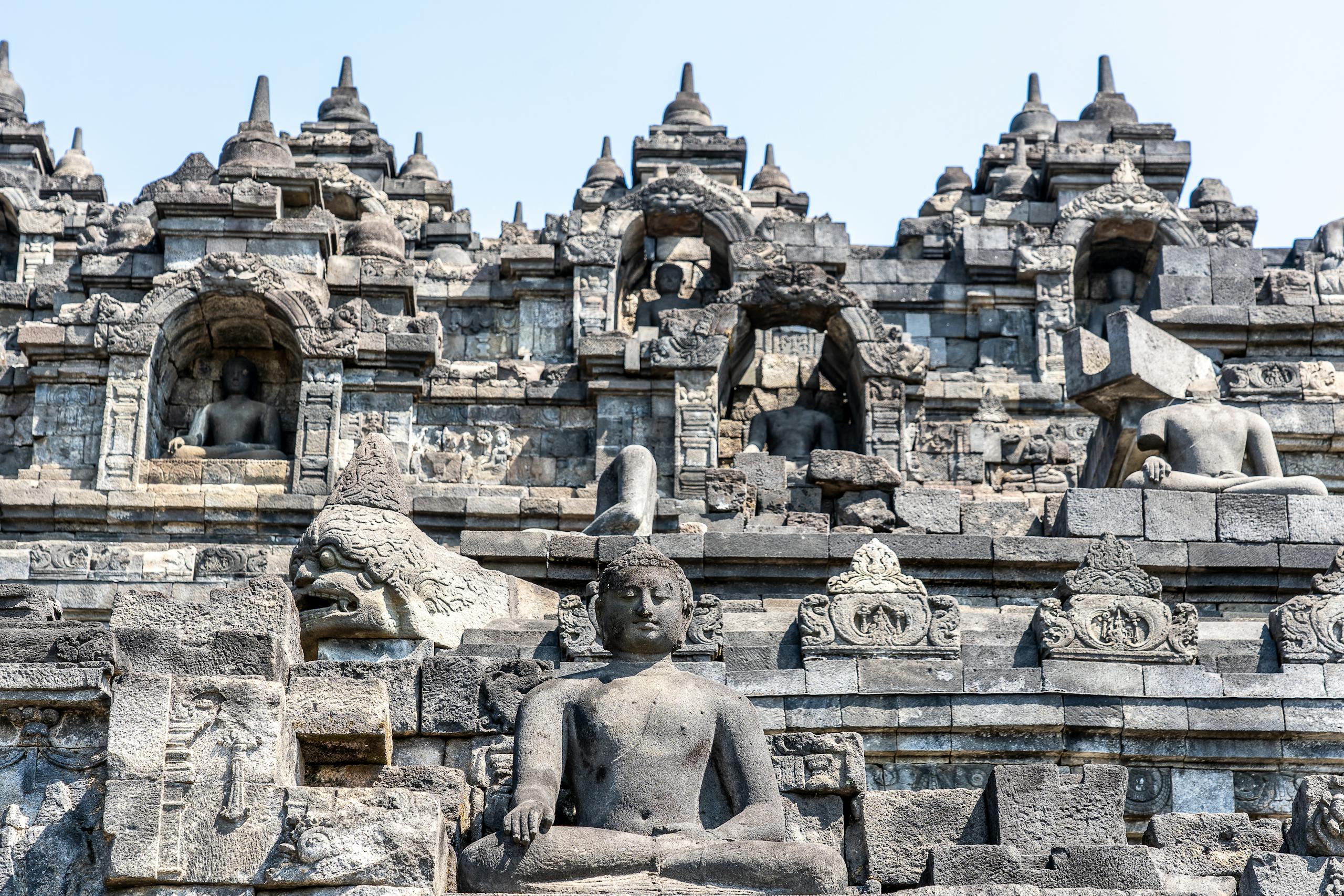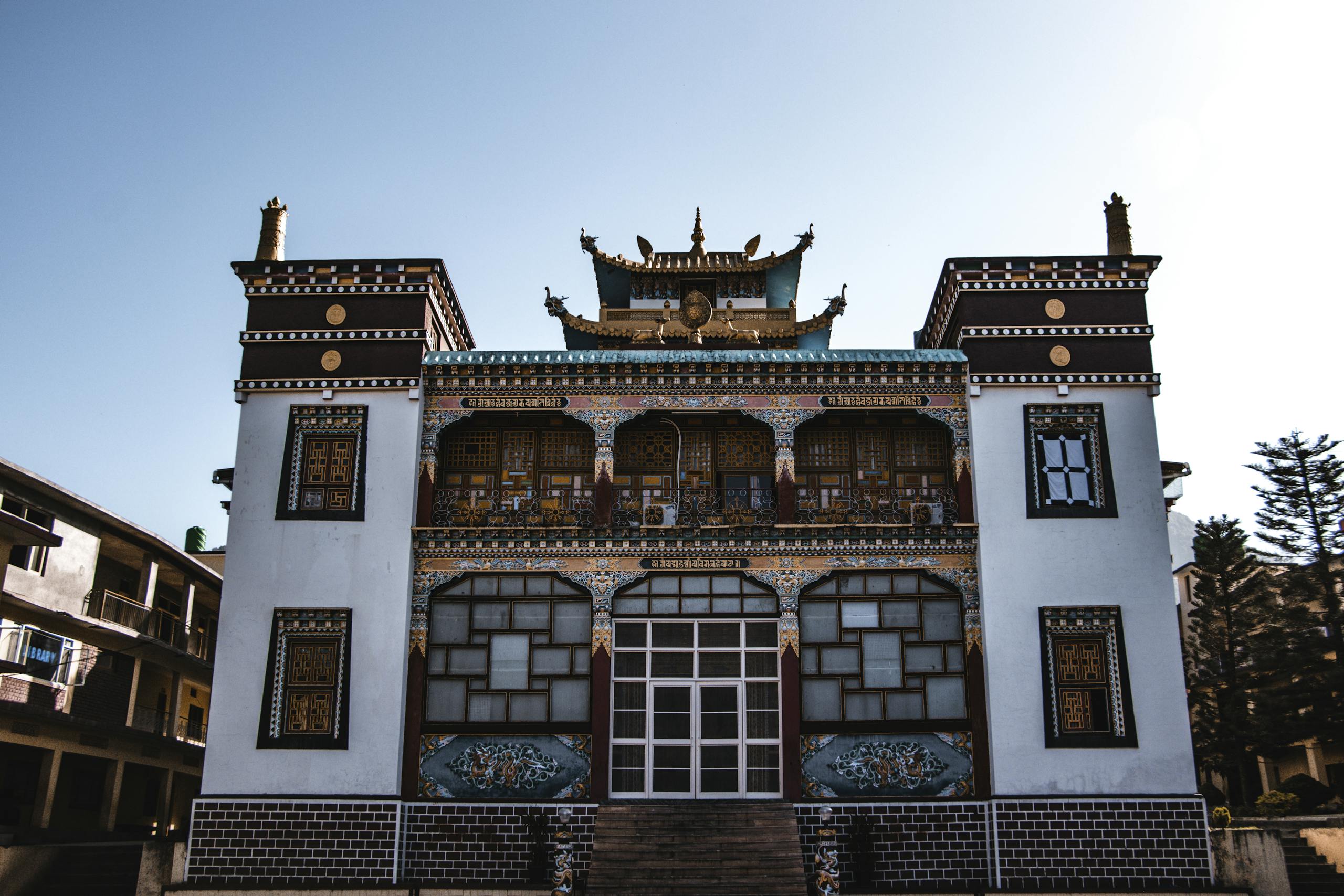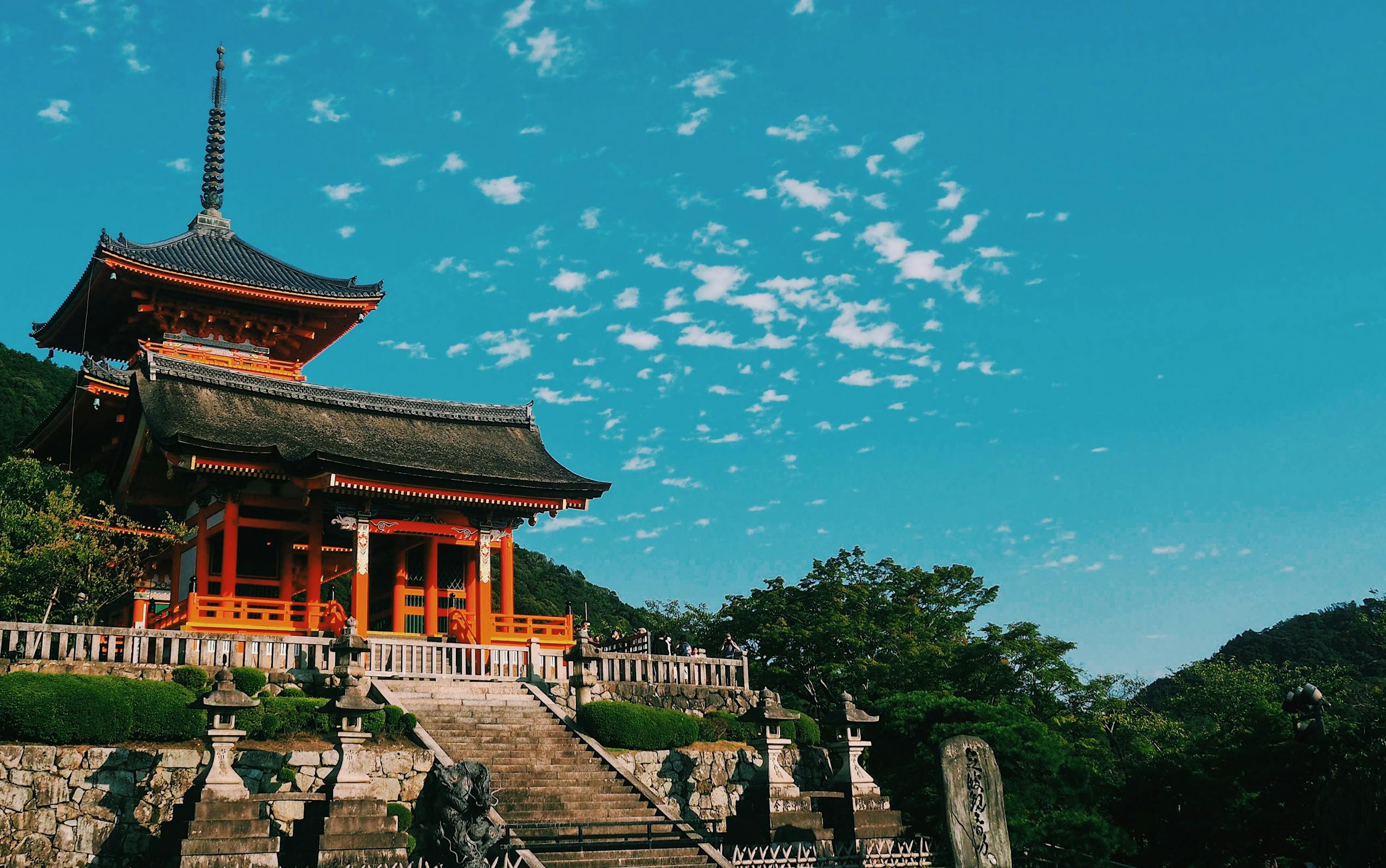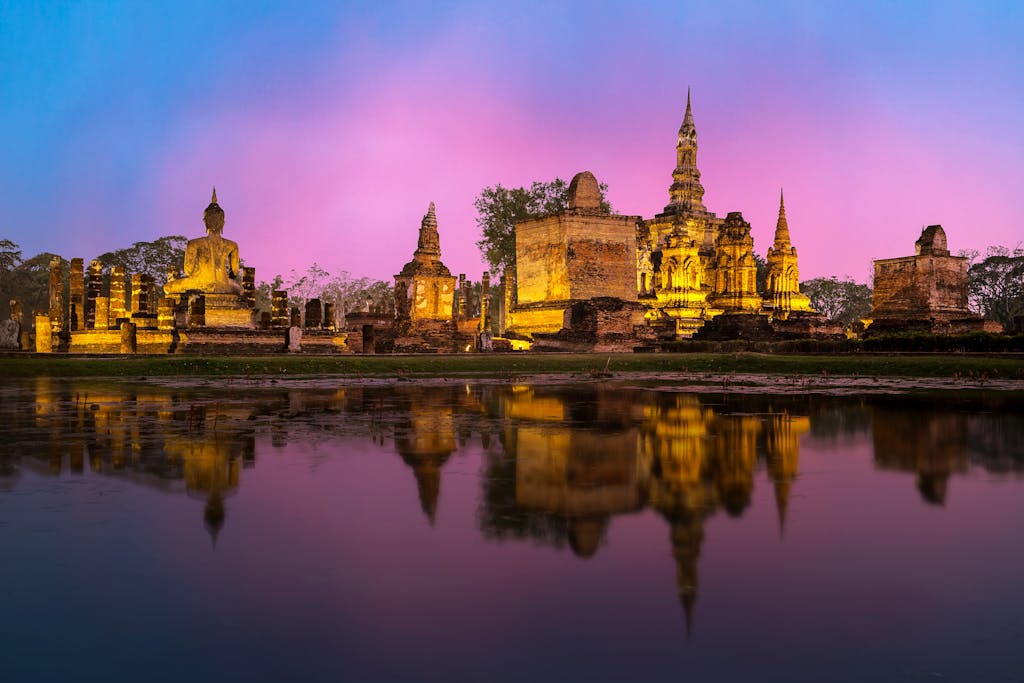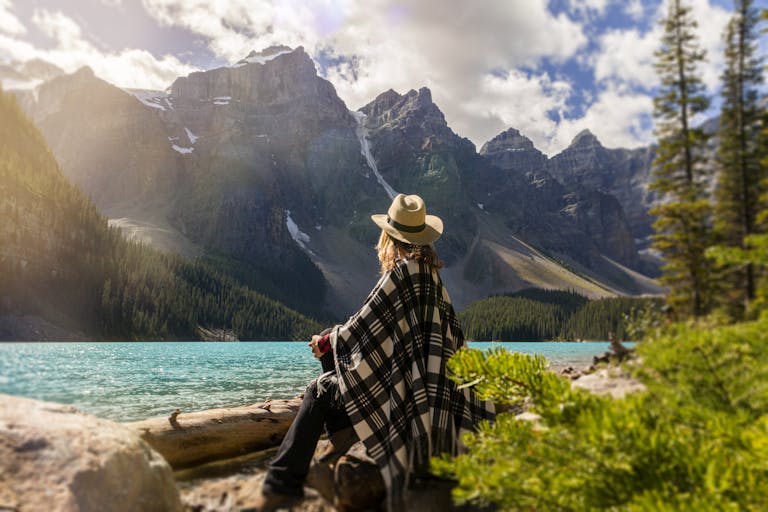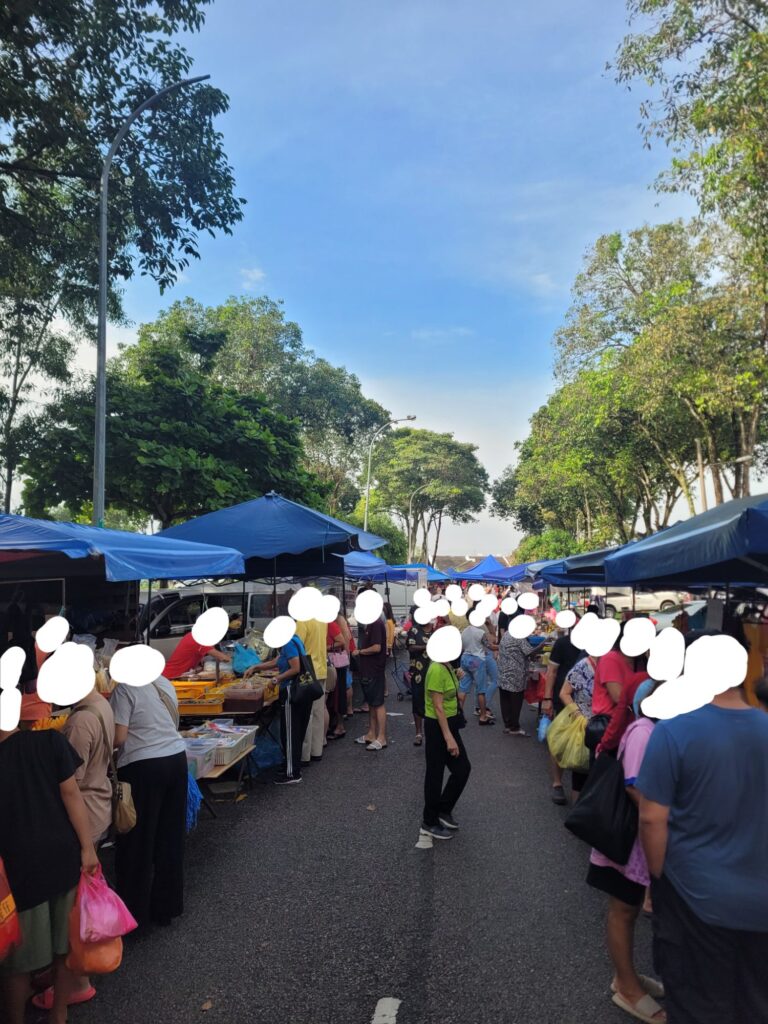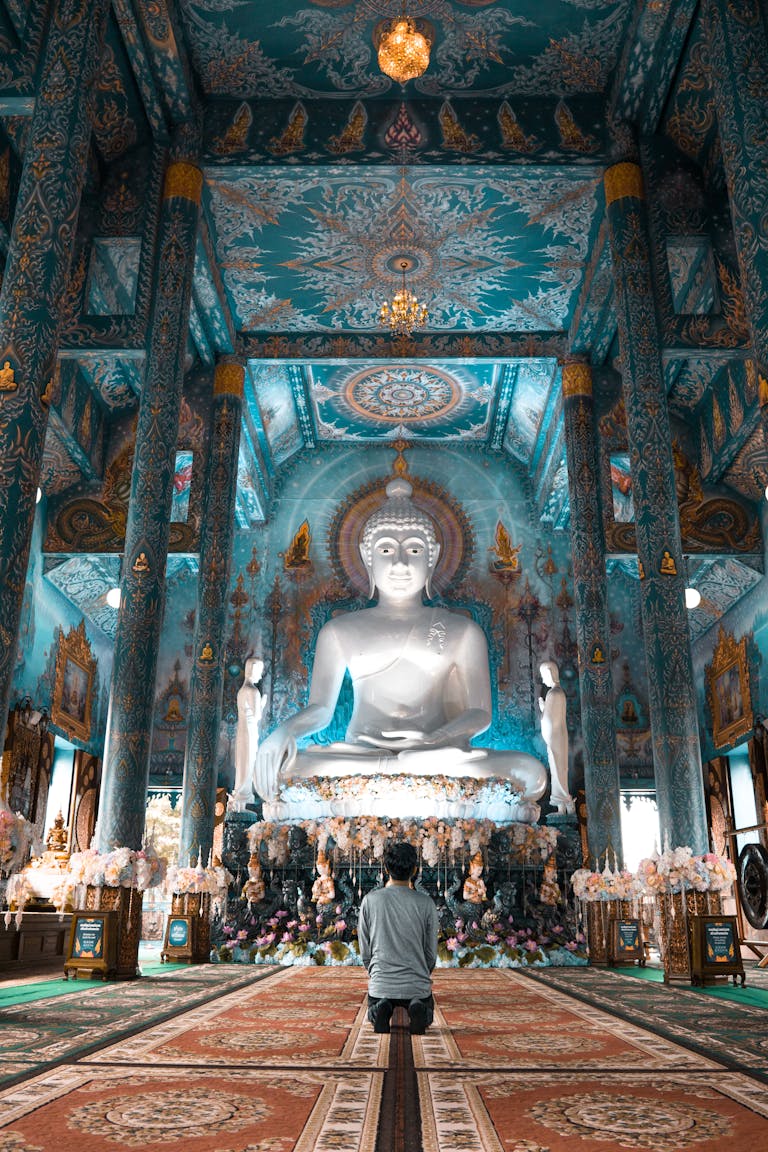Ever wonder why Buddhism in Thailand feels so different from Japan or Vietnam? This guide explores the fascinating regional differences in Buddhist cultures, from Theravada vs. Mahayana traditions to the unique cultural practices and festivals you’ll see on your travels.
In this series, we’ve journeyed from the tangible to the philosophical. In our first post, we decoded the rich art and symbols on a temple wall. In the second, we explored the profound ideas, like Karma and Impermanence, that inspired them. You’ve learned the what and the why.
But a fascinating question remains: If the core teachings are universal, why does the practice of Buddhism look and feel so different from one country to the next? Why is a temple in Kyoto so distinct from one in Colombo?
This guide is your cultural map to the diverse world of Buddhist practice. We’ll explore the two major schools of Buddhism and then journey through several key countries to see how their unique histories and cultures have shaped the way the Dharma is lived every day. This is the final piece of the puzzle, turning your knowledge into true on-the-ground appreciation.
☸️ 1. The Two Great Schools: Theravada vs. Mahayana Buddhism Explained

To understand the diversity you’ll encounter as a traveler, it’s helpful to start with the two major branches of Buddhism that emerged centuries after the Buddha’s passing. It’s not about which is “better,” but about different philosophical emphases on the path to the same ultimate goal: enlightenment. Despite their variations, all forms of Buddhism share core tenets like the Four Noble Truths and the Eightfold Path.
Theravada: “The Doctrine of the Elders”
As the name suggests, this school adheres closely to the earliest scriptures (the Pali Canon) and monastic discipline. It is the more conservative of the two branches, emphasizing a total reliance on oneself to eradicate all defilements.
- Core Focus: The path of individual liberation. The ultimate goal is to attain Nirvana to end the cycle of death and rebirth (saṃsāra).
- The Ideal Figure: The Arhat (or Arahant), a “perfected person.” This is an individual who has attained Nirvana for themselves by following the original teachings of the historical Buddha, prioritizing wisdom (prajñā).
- Where You’ll See It: Primarily in Sri Lanka, Thailand, Cambodia, Laos, and Myanmar.
- What a Traveler Observes:
- A Strict Monastic Life: Monks lead a simple life, following a strict code of 227 rules (the Vinaya). They are easily recognized by their shaven heads (signifying abandoning worldly life) and characteristic orange or maroon robes. They traditionally carry an alms bowl, have short hours of sleep, and often eat only one main meal a day.
- The Sangha’s Role: Beyond preserving the teachings, monasteries often serve as community pillars, providing counseling, education, and social services like running orphanages.
- Focus on the Historical Buddha: Art and devotion are centered on Siddhartha Gautama (Śākyamuni) and past Buddhas.
- Meditation: Silent-mind and mindfulness meditation are heavily emphasized, particularly Samatha (calming) and Vipassanā (insight) meditation.
- Food: Vegetarianism is not required. Monks follow the “triple-clean” rule, meaning they can accept meat if the animal was not killed specifically for them.
Mahayana: “The Great Vehicle”
This school introduced new scriptures and a broader interpretation of the path, emphasizing that enlightenment is accessible to all beings, not just monks. A key concept unique to Mahayana is Buddha-nature, the idea that all beings contain the innate potential for Buddhahood.
- Core Focus: The path of liberating all sentient beings from suffering.
- The Ideal Figure: The Bodhisattva. This is an enlightened being who, out of great compassion (karuṇā), delays their own final Nirvana to help every other being on earth achieve enlightenment first.
- Where You’ll See It: Primarily in East Asia (China, Japan, Korea, Vietnam) and the Himalayan region (Tibet, Bhutan, Nepal).
- What a Traveler Observes:
- A Vast Pantheon: You’ll see devotion to many Buddhas and Bodhisattvas. Besides the historical Buddha, figures like Amitābha (Buddha of Infinite Light) and Bodhisattvas like Avalokiteśvara (known as Guanyin in East Asia) are immensely popular. Many seek rebirth in a Pure Land, or Buddha-field.
- Many Sub-Schools: You’ll encounter diverse traditions like Zen (Chan), Pure Land, and Vajrayāna (Esoteric Buddhism), which uses mantras, mudras, and mandalas.
- Emphasis on Rituals: Mahayana places a greater emphasis on rituals, including those for the deceased. You’ll frequently see the use of bells, chanting, and symbolic hand gestures (mudras).
- Food: Vegetarianism is very well-observed in most Mahayana schools (with exceptions like Tibetan Buddhism due to geography) and is generally expected for monastics.
- The Bardo: The concept of an in between stage after death and before rebirth is a key teaching.
For a quick overview, here’s a simple comparison:
| Feature | Theravada Buddhism | Mahayana Buddhism |
|---|---|---|
| Ideal Figure | The Arhat (Individual Liberation) | The Bodhisattva (Universal Liberation) |
| Key Regions | Thailand, Sri Lanka, Cambodia | Japan, China, Tibet, Vietnam |
| View of Buddha | Focus on the historical Buddha | Many Buddhas & Bodhisattvas |
| Key Practice | Wisdom, monastic discipline | Compassion, diverse rituals |
| Vegetarianism | Not required | Strongly encouraged/often required |
✈️ 2. Country Spotlight: Seeing Buddhist Traditions in Action
Now, let’s see how these schools come to life. Here are a few snapshots of what you can expect to see and feel in different Buddhist cultures.
🇹🇭 Thailand: The Land of Merit and Monastic Life (Theravada)
The Feel: Buddhism is seamlessly woven into the very fabric of national identity. It’s visible, public, and deeply respected in every corner of life.
What You’ll See & Experience:
- The Alms Round: Witnessing the quiet, dignified procession of saffron-robed monks in the early morning as laypeople “make merit” by offering food is a powerful and quintessentially Thai cultural experience.
- Spirit Houses: Notice the small, ornate houses outside homes and businesses? This is a beautiful example of syncretism, blending pre-Buddhist animist beliefs (respect for local spirits) with Buddhist practices.
- Temporary Ordination: It’s a common rite of passage for many young men to become monks for a short period, an act that brings great merit and honor to their families.
- Highly Visible Sangha: You are guaranteed to see monks in their distinctive yellow and orange robes. They live a strict, simple life adhering to 227 rules (the Vinaya), and play a central role in teaching and conducting ceremonies.
- Temples (Wats): Thailand’s 30,000+ temples, featuring golden chedi (bell-shaped stupas) and multi-tiered roofs, are centers of worship, community, and celebration.
🇱🇰 Sri Lanka: The Island of Dharma and Ancient Roots (Theravada)
The Feel: A profound sense of historical continuity and national pride in preserving what is believed to be the purest form of the Buddha’s original teachings.
What You’ll See & Experience:
- The Bodhi Tree: The veneration of the Sri Maha Bodhi tree in Anuradhapura is central to Sri Lankan faith. Believed to be a sapling from the very tree under which the Buddha was enlightened, it’s a living, breathing link to the Buddha himself.
- Massive Stupas (Dagobas): Enormous, ancient stupas like Ruwanwelisaya dominate the landscape of the Cultural Triangle, serving as powerful pilgrimage sites and testaments to the island’s deep Buddhist history.
- Poya Days: Each full moon day (Poya) is a public holiday dedicated to Buddhist observance. You’ll see laypeople dressed in simple white clothing visiting temples to meditate, listen to sermons, and uphold the precepts.
- Relic Veneration: The Temple of the Sacred Tooth Relic in Kandy is one of the most sacred sites in the Buddhist world, highlighting the deep importance of relics in the Theravada tradition.
🇯🇵 Japan: A Tapestry of Zen, Shinto, and Serenity (Mahayana)
The Feel: Buddhism here feels more contemplative, philosophical, and deeply intertwined with an appreciation for nature, simplicity, and aesthetics.
What You’ll See & Experience:
- Zen Gardens: The raked sand and carefully placed rocks of a Zen garden aren’t just for beauty; they are tools for meditation on emptiness and impermanence. They are landscapes of the mind.
- Shinto & Buddhist Syncretism: It’s common for Japanese people to participate in both Shinto and Buddhist rituals. You’ll often find a Shinto shrine within or next to a Buddhist temple complex, a clear sign of the two paths harmonizing.
- Pure Land Chanting: You may hear the rhythmic chanting of “Namu Amida Butsu.” This is a core practice of the Pure Land school, focusing on devotion to Amitabha Buddha in the hope of being reborn in his Pure Land.
- Diversity of Schools: Besides Zen, Pure Land practices are common, emphasizing faith in Amitābha Buddha. You’ll see a wide variety of Buddhas in sculpture, including Dainichi (the Great Sun Buddha) and Amida (Amitābha).
🇻🇳 Vietnam: A Blend of Mahayana, Ancestors, and Taoism
The Feel: A unique fusion where Mahayana Buddhism is deeply interwoven with Confucian social ethics, Taoist naturalism, and a powerful, ever-present tradition of ancestor veneration.
What You’ll See & Experience:
- Altars Everywhere: Notice that almost every home and business has an altar. It will often have a small Buddha statue, but just as prominent will be offerings, incense, and photos dedicated to ancestors, showcasing the beautiful blend of faiths.
- The Bodhisattva of Compassion: Guanyin, known here as Quan Âm, is immensely popular. You will see her gentle statue everywhere, a testament to the Mahayana ideal of compassion.
- “Engaged Buddhism”: Vietnam is the homeland of the globally renowned Zen master Thích Nhất Hạnh. His philosophy of applying mindfulness to social and political issues has had a profound impact on modern Buddhism here and around the world.
- Taoist and Confucian Influences: Vietnamese Buddhism has been influenced by a “cultural additivity,” where different teachings are seen as complementary ways of cultivating one’s path.
Tibet & The Himalayan Region: The Mystical Path of Vajrayana (Mahayana)
The Feel: Tibetan Buddhism (a distinct form of Mahayana known as Vajrayana) is vibrant, energetic, and visually dramatic, characterized by complex rituals and a deep reverence for the teacher-student lineage.
What You’ll See & Experience:
- Prayer Flags: The ubiquitous colorful flags are not decoration. Each color represents an element, and the wind is believed to carry the printed mantras and prayers across the landscape, spreading blessings to all beings.
- Prayer Wheels & Mandalas: Spinning a prayer wheel is a physical way to send out millions of mantras. The intricate sand mandalas, painstakingly created and then ceremonially destroyed, are a profound public teaching on impermanence (read about it in my previous post).
- The Vajra and Bell: You’ll see these ritual objects everywhere. The vajra symbolizes the indestructible nature of enlightenment, while the bell represents wisdom. Together, they signify the union of wisdom and compassion.
- Vajrayana Practices: This tradition emphasizes the heavy use of mantras (like the famous “Om Mani Padme Hum”), mudras, mandalas, and the visualization of deities.
- Reborn Tulkus: Followers consider figures like the Dalai Lama to be tulkus, reincarnations of Bodhisattvas who have returned to help others.
🎉 3. The Rhythm of Life: Celebrating Major Buddhist Festivals
Planning a trip around a festival is one of the best ways to see these cultural traditions come alive. They are times of joy, reflection, and community gathering.
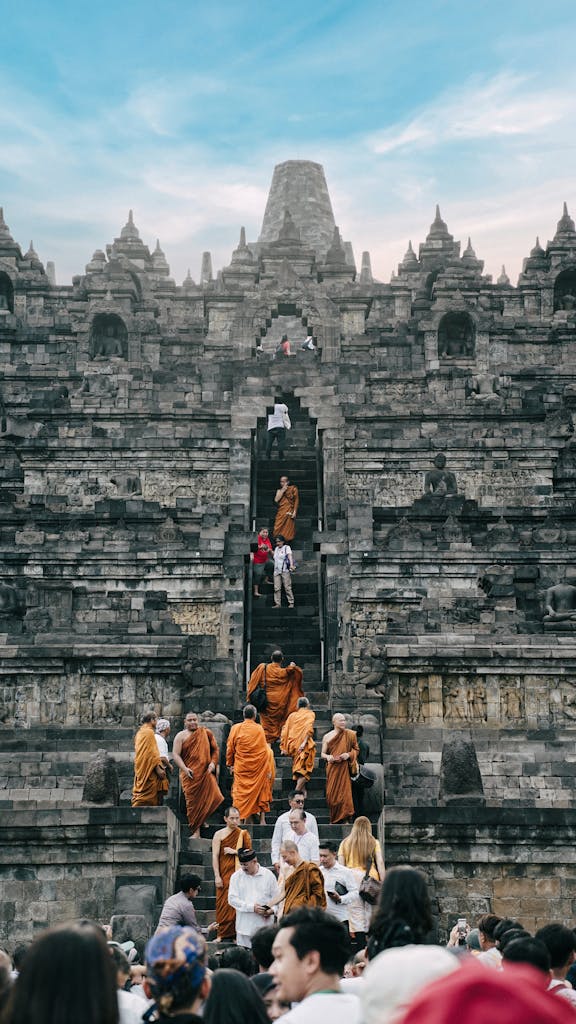
Vesak (or Wesak, Buddha Day): The Most Sacred Day
What it is: Commemorates the Buddha’s birth, enlightenment, and death, all on the first full moon day in May, primarily celebrated by Theravada Buddhists.
How You’ll See It: Light plays a huge role. Homes are decorated with candles and lanterns, symbolizing enlightenment overcoming ignorance. People gather at temples for meditation and sermons. In some places, like Singapore, you may see the release of caged birds as a symbol of liberation.
Parinirvana Day (or Nirvana Day): A Day of Reflection (Mahayana)
What it is: A more solemn festival in February that commemorates the Buddha’s death and his passing into the final state of Nirvana, celebrated usually on February 15th in East Asia, Vietnam, and the Philippines
How You’ll See It: A day for quiet reflection on the Buddhist concept of Anicca (impermanence) and for remembering deceased loved ones. People may study scriptures like the Mahaparinirvana Sutra, meditate at home, or join their community at a monastery. Some undertake pilgrimages to Kushinagar, India, where the Buddha is believed to have passed away.
Poson Poya (Sri Lanka): Celebrating the Arrival of Buddhism
What it is: This full-moon festival in June specifically commemorates the introduction of Buddhism to Sri Lanka. It is as important as Vesak on the island.
How You’ll See It: Mass pilgrimages to ancient sites like Mihintale. Homes are decorated with lanterns, and large, illuminated displays (pandals) depicting stories from the Buddha’s life are erected.
Obon (Japan): Honoring the Ancestors
What it is: A three-day festival in mid-August where families honor the spirits of their ancestors, who are believed to return to visit their relatives. It aligns with the broader tradition of honoring ancestors, which is also seen in the “Hungry Ghost Festival” (also known as “Ancestor Day” or “Ulambana”) celebrated from the first to the fifteenth days of the eighth lunar month, particularly in Chinese Buddhism
How You’ll See It: A poignant blend of Buddhist and folk traditions. You’ll see families cleaning graves, food offerings made at home altars, and paper lanterns hung to guide the spirits. It often culminates in Tōrō nagashi, where thousands of floating lanterns are released onto rivers, an incredibly beautiful sight.
Kathina: The Robe-Offering Ceremony (Theravada)
What it is: A joyful festival held in the month following the end of the monastic rainy season retreat (Vassa).
How You’ll See It: A beautiful expression of the reciprocal lay-monastic bond, where the community collectively offers new robes and other necessities to the monastery, generating immense merit.
Losar (Tibet & Himalayan Regions): A Spiritual New Year
What it is: The Tibetan New Year, a multi-day festival blending sacred rituals and secular celebration.
How You’ll See It: Monasteries hold elaborate prayer ceremonies and masked cham dances to exorcise evil spirits from the old year. Homes are thoroughly cleaned, and it’s a time for family feasts and visiting friends.
❓ Frequently Asked Questions (FAQ)
Is Zen a separate religion from Buddhism?
No, Zen is one of the many schools within Mahayana Buddhism. It originated in China (as Chan) and became highly developed in Japan. It simply places a particularly strong emphasis on meditation and direct insight as the primary path to awakening.
Do I need to know which type of Buddhism is practiced before I go?
You don’t need to, but having a basic understanding (e.g., “Thailand is mostly Theravada, Japan is Mahayana”) will dramatically enrich your experience. It helps you understand why you’re seeing what you’re seeing, turning a confusing observation into a moment of cultural insight.
Why are some Buddhist monks allowed to marry?
This is a great example of regional differences! In the Theravada tradition, monks follow a strict code of celibacy. However, certain schools of Mahayana Buddhism, particularly in Japan (like the Pure Land and some Zen sects), relaxed this rule centuries ago, allowing priests to marry and raise families while still running their temples.
Why do I see Hindu gods in some Buddhist temples?
This is a perfect example of religious syncretism. As Buddhism spread, it often incorporated pre-existing local deities into its worldview. In Thailand, you might see a shrine to the Hindu god Brahma, and in Tibetan Buddhism, figures like Ganesh are seen as protectors of the Dharma. This shows Buddhism’s remarkable ability to adapt to and harmonize with local cultures.
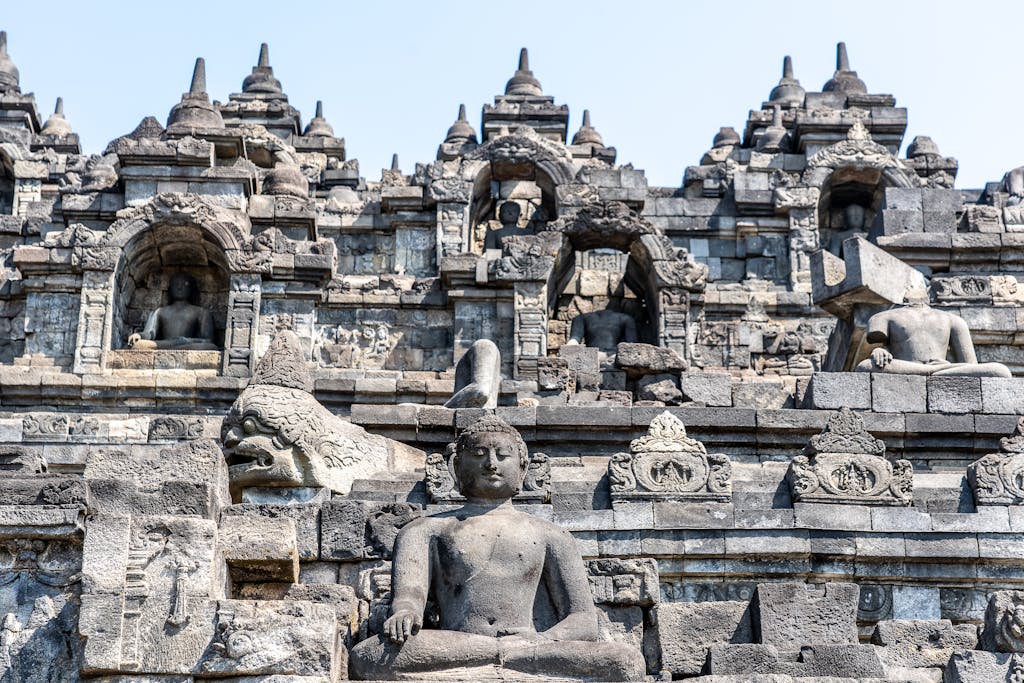
🙏 Conclusion: From Tourist to Thoughtful Observer
The Dharma may be a single, profound river of wisdom, but it flows through different cultural landscapes, taking on the unique color, character, and flavor of each one.
By understanding these regional differences, whether it’s the reason for a married priest in Japan or a saffron-robed monk on the streets of Luang Prabang, you move beyond being a simple tourist. You become a thoughtful observer, capable of appreciating not just the shared philosophy, but the beautiful, diverse, and living ways humanity expresses it.
This is the very heart of immersive, meaningful travel.
Which Buddhist culture has most fascinated you on your travels? Share your own observations and questions in the comments below! To explore more ways to travel with cultural awareness, visit our immersive travel pillar page.
Missed our first two posts in this series about Buddhism? Click here to view them!
Part 1: A Traveler’s Guide to Visiting Buddhist Temples: Etiquette, Art & Symbols Explained
Part 2: The Heart of the Dharma: 5 Core Buddhist Concepts for Travelers Explained
A Note on This Guide: Fostering Cultural Appreciation, Not Religious Promotion
Thank you for reading this guide! It’s important to clarify the intention behind this content.
This guide is created with the sole purpose of providing practical advice and cultural insights to fellow travelers. Our aim is to help you move beyond simple sightseeing, enabling you to understand the rich symbolism, history, and etiquette that underpin these sacred spaces. By offering context, we hope to deepen your appreciation and enrich your travel experience.
It is crucial to understand that this guide is not intended to promote or endorse any specific religion or belief system. Instead, it is a respectful exploration of cultural practices and artistic expressions from a traveler’s perspective.
Acknowledging Nuance & Welcoming Dialogue:
The world is vast and diverse, with practices and interpretations varying significantly across different traditions, regions, and countries. While we strive for accuracy and have conducted thorough research, there may inevitably be nuances, variations, or even unintentional inaccuracies in this overview.
We believe in continuous learning and collective knowledge. If you have deeper insights, corrections, or different perspectives rooted in experience or study, we warmly invite you to share them respectfully in the comments section. Your contributions help make this a better resource for all curious travelers.

